The NVIDIA GeForce RTX 2080 Ti & RTX 2080 Founders Edition Review: Foundations For A Ray Traced Future
by Nate Oh on September 19, 2018 5:15 PM EST- Posted in
- GPUs
- Raytrace
- GeForce
- NVIDIA
- DirectX Raytracing
- Turing
- GeForce RTX
The RTX Recap: A Brief Overview of the Turing RTX Platform
Overall, NVIDIA’s grand vision for real-time, hybridized raytracing graphics means that they needed to make significant architectural investments into future GPUs. The very nature of the operations required for ray tracing means that they don’t map to traditional SIMT execution especially well, and while this doesn’t preclude GPU raytracing via traditional GPU compute, it does end up doing so relatively inefficiently. Which means that of the many architectural changes in Turing, a lot of them have gone into solving the raytracing problem – some of which exclusively so.
To that end, on the ray tracing front Turing introduces two new kinds of hardware units that were not present on its Pascal predecessor: RT cores and Tensor cores. The former is pretty much exactly what the name says on the tin, with RT cores accelerating the process of tracing rays, and all the new algorithms involved in that. Meanwhile the tensor cores are technically not related to the raytracing process itself, however they play a key part in making raytracing rendering viable, along with powering some other features being rolled out with the GeForce RTX series.
Starting with the RT cores, these are perhaps NVIDIA’s biggest innovation – efficient raytracing is a legitimately hard problem – however for that reason they’re also the piece of the puzzle that NVIDIA likes talking about the least. The company isn’t being entirely mum, thankfully. But we really only have a high level overview of what they do, with the secret sauce being very much secret. How NVIDIA ever solved the coherence problems that dog normal raytracing methods, they aren’t saying.
At a high level then, the RT cores can essentially be considered a fixed-function block that is designed specifically to accelerate Bounding Volume Hierarchy (BVH) searches. BVH is a tree-like structure used to store polygon information for raytracing, and it’s used here because it’s an innately efficient means of testing ray intersection. Specifically, by continuously subdividing a scene through ever-smaller bounding boxes, it becomes possible to identify the polygon(s) a ray intersects with in only a fraction of the time it would take to otherwise test all polygons.
NVIDIA’s RT cores then implement a hyper-optimized version of this process. What precisely that entails is NVIDIA’s secret sauce – in particular the how NVIDIA came to determine the best BVH variation for hardware acceleration – but in the end the RT cores are designed very specifically to accelerate this process. The end product is a collection of two distinct hardware blocks that constantly iterate through bounding box or polygon checks respectively to test intersection, to the tune of billions of rays per second and many times that number in individual tests. All told, NVIDIA claims that the fastest Turing parts, based on the TU102 GPU, can handle upwards of 10 billion ray intersections per second (10 GigaRays/second), ten-times what Pascal can do if it follows the same process using its shaders.
NVIDIA has not disclosed the size of an individual RT core, but they’re thought to be rather large. Turing implements just one RT core per SM, which means that even the massive TU102 GPU in the RTX 2080 Ti only has 72 of the units. Furthermore because the RT cores are part of the SM, they’re tightly couple to the SMs in terms of both performance and core counts. As NVIDIA scales down Turing for smaller GPUs by using a smaller number of SMs, the number of RT cores and resulting raytracing performance scale down with it as well. So NVIDIA always maintains the same ratio of SM resources (though chip designs can very elsewhere).
Along with developing a means to more efficiently test ray intersections, the other part of the formula for raytracing success in NVIDIA’s book is to eliminate as much of that work as possible. NVIDIA’s RT cores are comparatively fast, but even so, ray interaction testing is still moderately expensive. As a result, NVIDIA has turned to their tensor cores to carry them the rest of the way, allowing a moderate number of rays to still be sufficient for high-quality images.
In a nutshell, raytracing normally requires casting many rays from each and every pixel in a screen. This is necessary because it takes a large number of rays per pixel to generate the “clean” look of a fully rendered image. Conversely if you test too few rays, you end up with a “noisy” image where there’s significant discontinuity between pixels because there haven’t been enough rays casted to resolve the finer details. But since NVIDIA can’t actually test that many rays in real time, they’re doing the next-best thing and faking it, using neural networks to clean up an image and make it look more detailed than it actually is (or at least, started out at).
To do this, NVIDIA is tapping their tensor cores. These cores were first introduced in NVIDIA’s server-only Volta architecture, and can be thought of as a CUDA core on steroids. Fundamentally they’re just a much larger collection of ALUs inside a single core, with much of their flexibility stripped away. So instead of getting the highly flexible CUDA core, you end up with a massive matrix multiplication machine that is incredibly optimized for processing thousands of values at once (in what’s called a tensor operation). Turing’s tensor cores, in turn, double down on what Volta started by supporting newer, lower precision methods than the original that in certain cases can deliver even better performance while still offering sufficient accuracy.
As for how this applies to ray tracing, the strength of tensor cores is that tensor operations map extremely well to neural network inferencing. This means that NVIDIA can use the cores to run neural networks which will perform additional rendering tasks. in this case a neural network denoising filter is used to clean up the noisy raytraced image in a fraction of the time (and with a fraction of the resources) it would take to actually test the necessary number of rays.
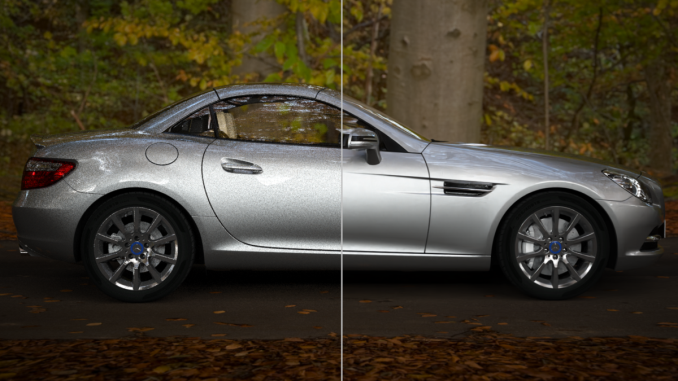
No Denoising vs. Denoising in Raytracing
The denoising filter itself is essentially an image resizing filter on steroids, and can (usually) produce a similar quality image as brute force ray tracing by algorithmically guessing what details should be present among the noise. However getting it to perform well means that it needs to be trained, and thus it’s not a generic solution. Rather developers need to take part in the process, training a neural network based on high quality fully rendered images from their game.
Overall there are 8 tensor cores in every SM, so like the RT cores, they are tightly coupled with NVIDIA’s individual processor blocks. Furthermore this means tensor performance scales down with smaller GPUs (smaller SM counts) very well. So NVIDIA always has the same ratio of tensor cores to RT cores to handle what the RT cores coarsely spit out.
Deep Learning Super Sampling (DLSS)
Now with all of that said, unlike the RT cores, the tensor cores are not fixed function hardware in a traditional sense. They’re quite rigid in their abilities, but they are programmable none the less. And for their part, NVIDIA wants to see just how many different fields/tasks that they can apply their extensive neural network and AI hardware to.
Games of course don’t fall under the umbrella of traditional neural network tasks, as these networks lean towards consuming and analyzing images rather than creating them. None the less, along with denoising the output of their RT cores, NVIDIA’s other big gaming use case for their tensor cores is what they’re calling Deep Learning Super Sampling (DLSS).
DLSS follows the same principle as denoising – how can post-processing be used to clean up an image – but rather than removing noise, it’s about restoring detail. Specifically, how to approximate the image quality benefits of anti-aliasing – itself a roundabout way of rendering at a higher resolution – without the high cost of actually doing the work. When all goes right, according to NVIDIA the result is an image comparable to an anti-aliased image without the high cost.
Under the hood, the way this works is up to the developers, in part because they’re deciding how much work they want to do with regular rendering versus DLSS upscaling. In the standard mode, DLSS renders at a lower input sample count – typically 2x less but may depend on the game – and then infers a result, which at target resolution is similar quality to a Temporal Anti-Aliasing (TAA) result. A DLSS 2X mode exists, where the input is rendered at the final target resolution and then combined with a larger DLSS network. TAA is arguably not a very high bar to set – it’s also a hack of sorts that seeks to avoid doing real overdrawing in favor of post-processing – however NVIDIA is setting out to resolve some of TAA’s traditional inadequacies with DLSS, particularly blurring.
Now it should be noted that DLSS has to be trained per-game; it isn’t a one-size-fits all solution. This is done in order to apply a unique neutral network that’s appropriate for the game at-hand. In this case the neural networks are trained using 64x SSAA images, giving the networks a very high quality baseline to work against.
None the less, of NVIDIA’s two major gaming use cases for the tensor cores, DLSS is by far the more easily implemented. Developers need only to do some basic work to add NVIDIA’s NGX API calls to a game – essentially adding DLSS as a post-processing stage – and NVIDIA will do the rest as far as neural network training is concerned. So DLSS support will be coming out of the gate very quickly, while raytracing (and especially meaningful raytracing) utilization will take much longer.
In sum, then the upcoming game support aligns with the following table.
| Planned NVIDIA Turing Feature Support for Games | |||||
| Game | Real Time Raytracing | Deep Learning Supersampling (DLSS) | Turing Advanced Shading | ||
| Ark: Survival Evolved | Yes | ||||
| Assetto Corsa Competizione | Yes | ||||
| Atomic Heart | Yes | Yes | |||
| Battlefield V | Yes | ||||
| Control | Yes | ||||
| Dauntless | Yes | ||||
| Darksiders III | Yes | ||||
| Deliver Us The Moon: Fortuna | Yes | ||||
| Enlisted | Yes | ||||
| Fear The Wolves | Yes | ||||
| Final Fantasy XV | Yes | ||||
| Fractured Lands | Yes | ||||
| Hellblade: Senua's Sacrifice | Yes | ||||
| Hitman 2 | Yes | ||||
| In Death | Yes | ||||
| Islands of Nyne | Yes | ||||
| Justice | Yes | Yes | |||
| JX3 | Yes | Yes | |||
| KINETIK | Yes | ||||
| MechWarrior 5: Mercenaries | Yes | Yes | |||
| Metro Exodus | Yes | ||||
| Outpost Zero | Yes | ||||
| Overkill's The Walking Dead | Yes | ||||
| PlayerUnknown Battlegrounds | Yes | ||||
| ProjectDH | Yes | ||||
| Remnant: From the Ashes | Yes | ||||
| SCUM | Yes | ||||
| Serious Sam 4: Planet Badass | Yes | ||||
| Shadow of the Tomb Raider | Yes | ||||
| Stormdivers | Yes | ||||
| The Forge Arena | Yes | ||||
| We Happy Few | Yes | ||||
| Wolfenstein II | Yes | ||||


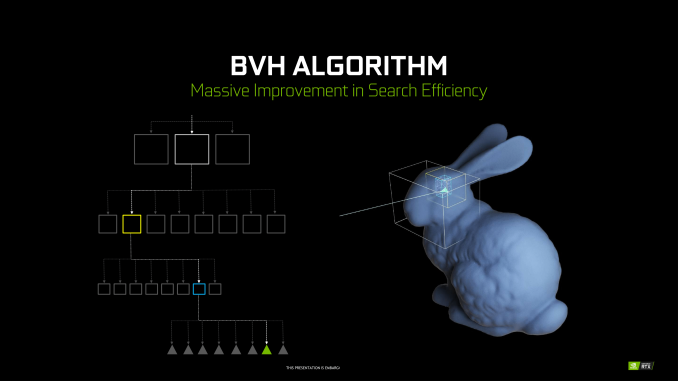
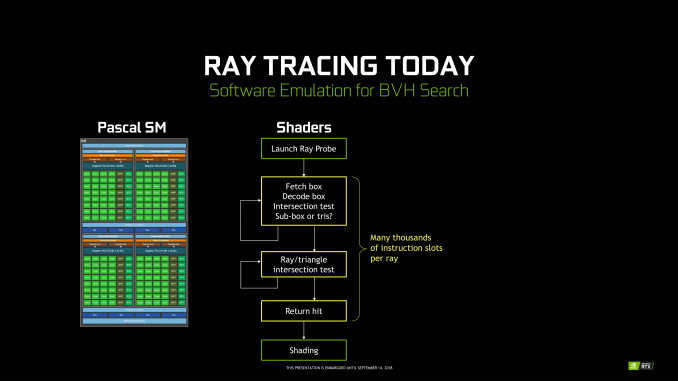
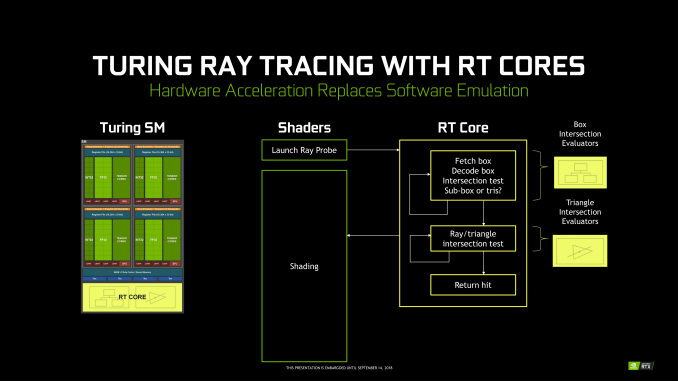
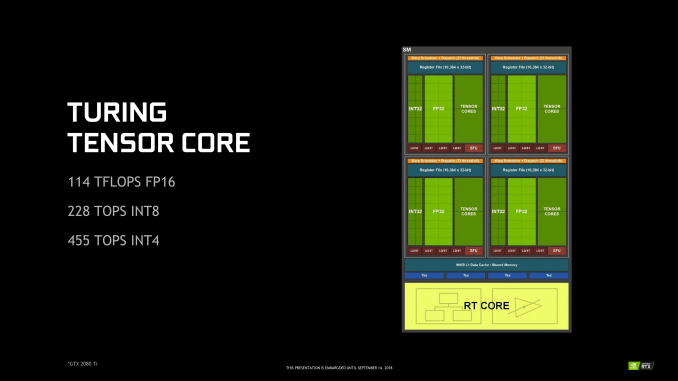
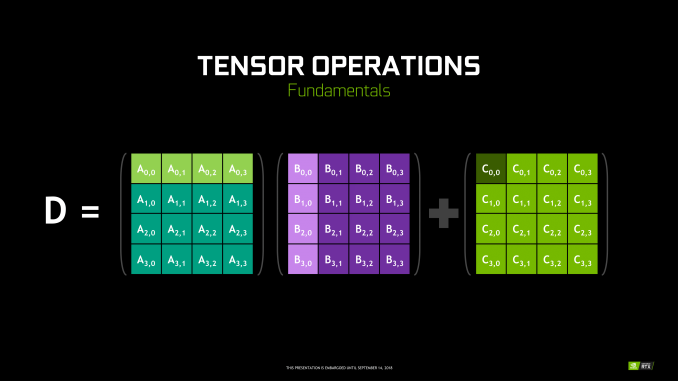
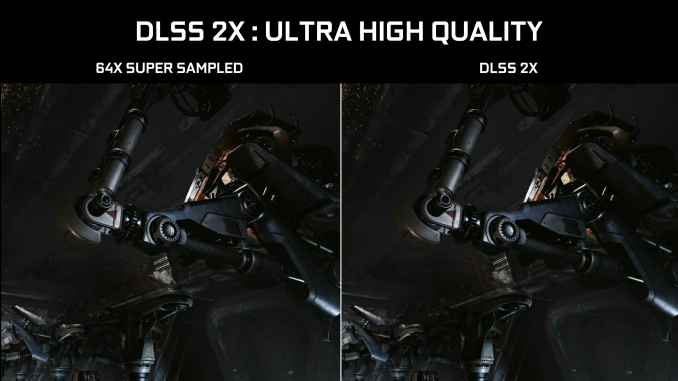








337 Comments
View All Comments
V900 - Thursday, September 20, 2018 - link
That’s plain false.Tomb Raider is a title out now with RTX enabled in the game.
Battlefield 5 is out in a month or two (though you can play it right now) and will also utilize RTX.
Sorry to destroy your narrative with the fact, that one of the biggest titles this year is supporting RTX.
And that’s of course just one out of a handful of titles that will do so, just in the next few months.
Developer support seems to be the last thing that RTX2080 owners need to worry about, considering that there are dozens of titles, many of them big AAA games, scheduled for release just in the first half of 2019.
Skiddywinks - Friday, September 21, 2018 - link
Unless I'm mistaken, TR does not support RTX yet. Obviously, otherwise it would be showing up in reviews everywhere. There is a reason every single reviewer is only benchmarking traditional games; that's all there is right now.Writer's Block - Monday, October 1, 2018 - link
Exactly.Is supporting or enabled.
However - neiher actually have it now to see, to experience.
eva02langley - Thursday, September 20, 2018 - link
These cards are nothing more than a cheap magic trick show. Nvidia knew about the performances being lackluster, and based their marketing over gimmick to square the competition by affirming that these will be the future of gaming and you will be missing out without it.Literally, they basically tried to create a need... and if you are defending Nvidia over this, you have just drinking the coolaid at this point.
Quote me on this, this will be the next gameworks feature that devs will not bother touching. Why? Because devs are developing games on consoles and transit them to PC. The extra time in development doesn't bring back any additional profit.
Skiddywinks - Friday, September 21, 2018 - link
Here's the thing though, I don't the performance is that lacklustre, the issue is we have this huge die and half of it does not do what most people want; give us more frames. If they had made the same size die with nothing but traditional CUDA cores, the 2080 Ti would be an absolute beast. And I'd imagine it would be a lot cheaper as well.But nVidia (maybe not mistakenly) have decided to push the raytracing path, and those of us you just want maximum performance for the price (me) and were waiting for the next 1080 Ti are basically left thinking "... oh well, skip".
eva02langley - Friday, September 21, 2018 - link
DOn't get me wrong, these cards are a normal upgrade performance jump, however it is not the second christ sent that Nvidia is marketing.The problem here is Nvidia want to corner AMD and their tactic they choose is RTX. However RTX is nothing else than a FEATURE. The gamble could cost them a lot.
If AMD gaming and 7nm strategy pays off, devs will develop on AMD hardware and transit to PC architecture leaving devs no incentive to put the extra work for a FEATURE.
The extra cost of the bigger die should have been for gaming performances, but Nvidia strategy is to disrupt competition and further their stand as a monopoly as they can.
Physx didn't work, hairwork didn't work and this will not work. As cool as it is, this should have been a feature for pro cards only, not consumers.
mapesdhs - Thursday, September 27, 2018 - link
That's the thing though, they aren't a "normal" upgrade performance jump, because the prices make no sense.AnnoyedGrunt - Thursday, September 20, 2018 - link
This reminds me quite a bit of the original GeForce 256 launch. Not sure how many of you were following Anandtech back then, but it was my go-to site then just as it is now. Here are links to some of the original reviews:GeForce256 SDR: https://www.anandtech.com/show/391
GeForce256 DDR: https://www.anandtech.com/show/429
Similar to the 20XX series, the GeForce256 was Nvidia's attempt to change the graphics card paradigm, adding hardware tranformation and lighting to the graphics card (and relieving the CPU from those tasks). The card was faster than the contemporary cards, but also much more expensive, making the value questionable for many.
At the time I was a young mechanical engineer, and I remember feeling that Nvidia was brilliant for creating this card. It let me run Pro/E R18 on my $1000 home computer, about as fast as I could on my $20,000 HP workstation. That card basically destroyed the market of workstation-centric companies like SGI and Sun, as people could now run CAD packages on a windows PC.
The 20XX series gives me a similar feeling, but with less obvious benefit to the user. The cards are as fast or faster than the previous generation, but are also much more expensive. The usefulness is likely there for developers and some professionals like industrial designers who would love to have an almost-real-time, high quality, rendered image. For gamers, the value seems to be a stretch.
While I was extremely excited about the launch of the original GeForce256, I am a bit "meh" about the 20XX series. I am looking to build a new computer and replace my GTX 680/i5-3570K, but this release has not changed the value equation at all.
If I look at Wolfenstein, then a strong argument could be made for the 2080 being more future proof, but pretty much all other games are a wash. The high price of the 20XX series means that the 1080 prices aren't dropping, and I doubt the 2070 will change things much since it looks like it would be competing with the vanilla 1080, but costing $100 more.
Looks like I will wait a bit more to see how that price/performance ends up, but I don't see the ray-tracing capabilities bringing immediate value to the general public, so paying extra for it doesn't seem to make a lot of sense. Maybe driver updates will improve performance in today's games, making the 20XX series look better than it does now, but I think like many, I was hoping for a bit more than an actual reduction in the performance/price ratio.
-AG
eddman - Thursday, September 20, 2018 - link
How much was a 256 at launch? I couldn't find any concrete pricing info but let's go with $500 to be safe. That's just $750 by today's dollar for something that is arguably the most revolutionary nvidia video card.Ananke - Thursday, September 20, 2018 - link
Yep, and it was also not selling well among "gamers" novelty, that became popular after falling under $100 a pop years later. Same here, financial analysts say the expected revenue from gaming products will drop in the near future, and Wall Street already dropped NVidia. Product is good, but expensive, it is not going to sell in volume, their revenue will drop in the imminent quarters.Apple's XS phone was the same, but Apple started a buy-one-get-one campaign on the very next day, plus upfront discount and solid buyback of iPhones. Yet, not clear whether they will achieve volume and revenue growth within the priced in expectations.
These are public companies - they make money from Wall Street, and they /NVidia/ can lose much more and much faster on the capital markets, versus what they would gain in profitability from lesser volume high end boutique products. This was relatively sh**y launch - NVidia actually didn't want to launch anything, they want to sell their glut of GTX inventory first, but they have silicon ordered and made already at TSMC, and couldn't just sit on it waiting...